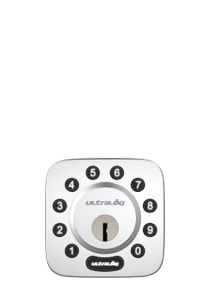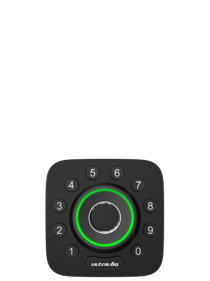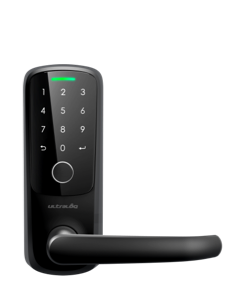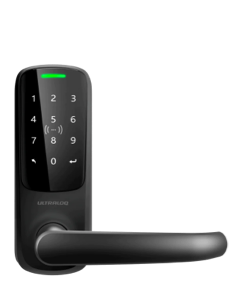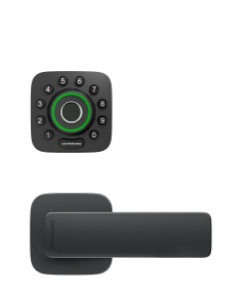I just purchased and installed three of the U-Bolt Pro WiFi. I installed them as replacements for the Yale Nest smart locks. I mention this because I’ve used the Yale Nest smart locks for years without any problem, but the replacement process required a bit more fine tuning than I expected.
After installing the U-Bolt locks, I kinda thought I had things done perfectly. But I had the same problem you are reporting. The U-Bolt would try two or three times to lock and then report a jam. Or it would fail to open. Testing my kitchen door with the door open, the deadbolt retract and a half inch of the deadbolt would still be extended.
My exterior doors have good weather striping seals. This means that the weather stripping pushes against the door to form an air tight seal. And that means that the closed door pushes agains the door latch- not the deadbolt, but the door latch.
That’s context. In my case, I had two problems. The first one was related to the strike plate on the door jam and the second problem is alignment of the pieces of the U-Bolt in the door.
The first failure mode was that the deadbolt was rubbing on the latch plate. To fix this, I got some wet food coloring and painted the inside of the deadbolt latch plate, closed the door and then locked and unlocked the door a few times. Opened the door and extended the deadbolt. Wherever there was food coloring on the deadbolt was a friction point with the latch plate.
To fix this failure mode, I got a small file and filed the part of the latch plate that was in contact with the deadbolt. Moving a latch plate 1/8th of an inch either way would be big project that is beyond the scope of this note. Know that in most cases, simply filing the opening in the latch plate will solve this problem.
The second failure mode is more vexing, mysterious and seems like an opportunity to improve the design of the U-bolt. The instructions note that we have to be careful not to wrap the control wire around the locking spindle. Sure, but that’s almost impossible to do. But it does give you a clue about the failure mode. The motor on this lock simply doesn’t deliver the same amount of torque that you might be able to deliver using your fingers. If you can’t turn the deadbolt spindle with your fingers, the U-Bolt wont be able to either.
To test for the second failure mode, do this: Remove the inside control box from the U-Bolt. With the door open, grab the deadbolt spindle between your thumb and one finger. Twist to throw the deadbolt.
If the deadbolt doesn’t throw with almost zero friction, you have an alignment problem. The outside control box that holds the spindle captive, the deadbolt, the mounting plate AND the Inside control box all have to be perfectly aligned. Ultraloq has done a bunch of work to make this system installable by home owners, and there’s plenty of wiggle in the deadbolt, the spindle and mounting plate.
But every bit of wiggle in the linkage adds a bit of drag to the system if the alignment is off.
I had this problem with two of my doors and fixing the alignment took about 20 mintutes for each door. Here’s how I did it:
Step 1. Resolve problem 1 as above.
Step 2. Back out the two screws that secure the bolt mechanism into the door.
Step 3. Mount the outside control box with the spindle through the deadbolt and loosely fit the two bolts through the mounting plate. Keep the bolts loose for the moment. You might need a helper.
Step 4. Cut a piece of painters or masking tape. Then eyeball the alignment for the outside control box so that the spindle is flat and level through the bolt and the mounting plate. When it’s as level as you can make it, mark the bottom of the outside control box with the painters tape. You will want to be able to feel the ridge of the tape as you move the control box later.
Step 5. With the door open, and securing the alignment of the assembly with one hand, grab the spindle with your thumb and forefinger in the other hand and throw the deadbolt back and forth. If it binds at all, try moving the outside control box a little bit up. A little bit down. A little left… A little right. Using the painters tape as a reference, find the place where the spindle spins the most freely. When you think you found it, tighten the two bolts in the mounting plate. Test- are you still able to throw the deadbolt with two fingers? Did it become more difficult after you tightened the two bolts? If yes, loosen the assembly and try again… and again… and again until you find the sweet spot. Use the painters tape as reference to learn from. Once you find the sweet spot, go on to the next step.
Step 6. Tighten the two screws that hold the deadbolt into the door a little. Test spin the spindle. If it spins easily, tighten them all the way and try again. I had to leave one of my bolts with the screws backed off a quarter of a turn. I don’t know why, but that’s what I found.
Step 7. Once you have the spindle easily turning freely, close the door and test again. Ensure that it spins just as easily with the door closed as it does with the door open. Maybe keep a pair of pliers handy or have a buddy with a key waiting outside- if it binds with the door closed you will want a ready method to unlock the door! If it turns easily open and closed, put the inside control box on and test. you should be good to go. If not, go back to solving the first problem!
Note: do not add any lubricants to the assembly. Doing so will only cause heartache in the future.
All three of my U-Bolts required that I file the strike plate on the door jam. Two of them required rather finicky alignment as described. I’m certain it wasn’t the cable rubbing on the spindle. These locks are simply prone to binding up.
On the plus side, after all the finicky alignment work, the door locks operate super fast.
Good luck!


